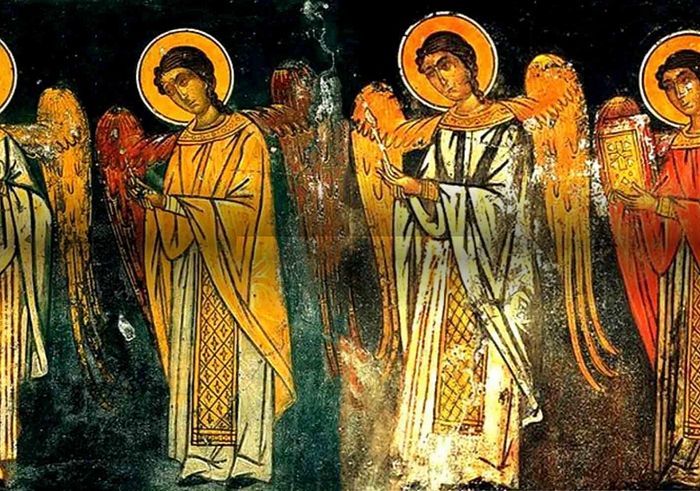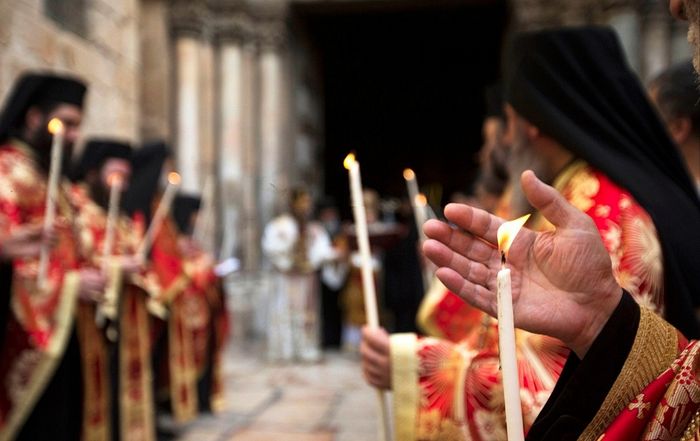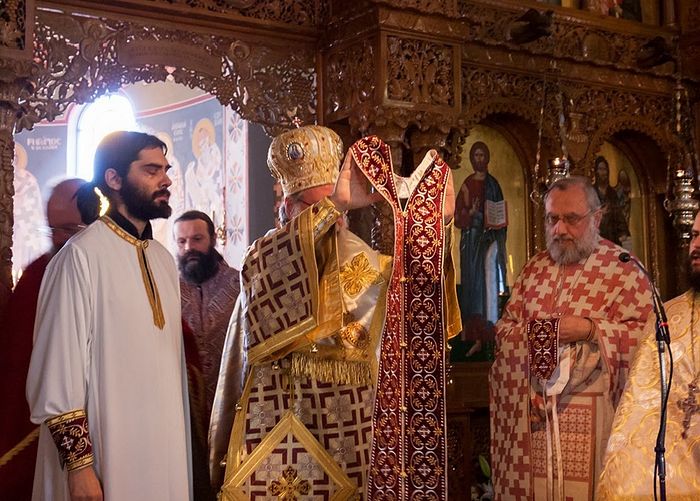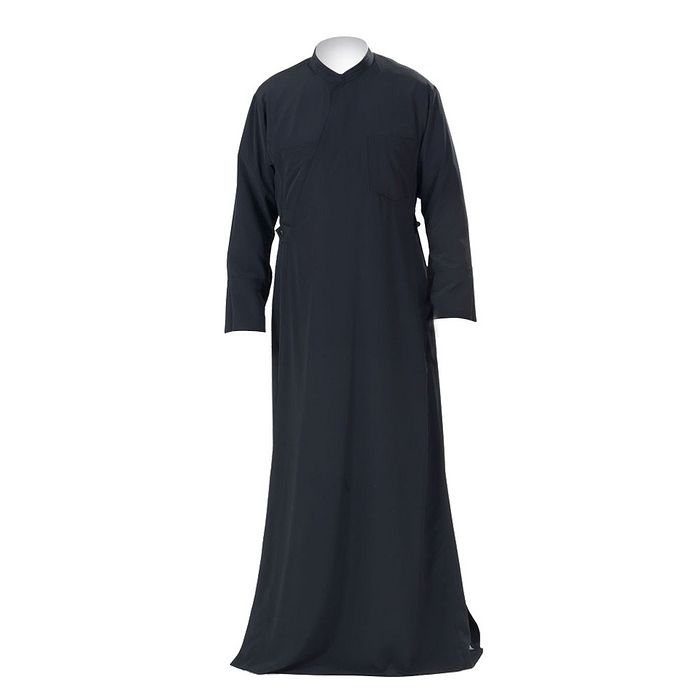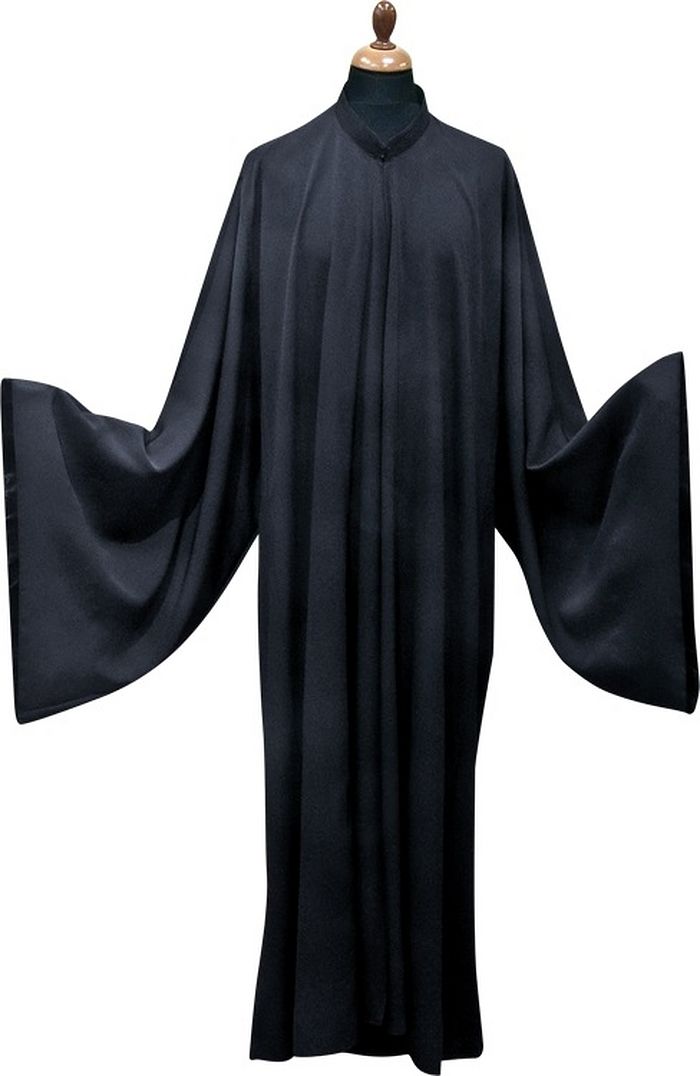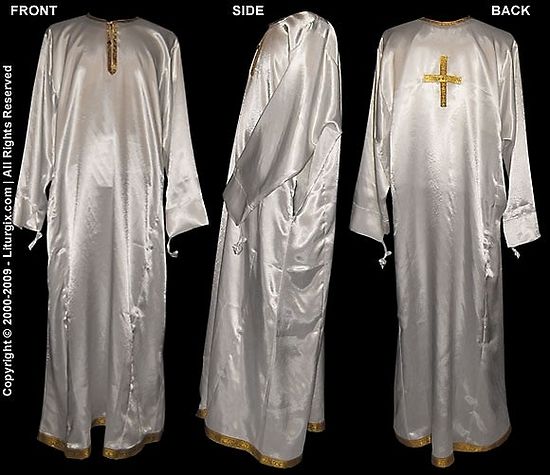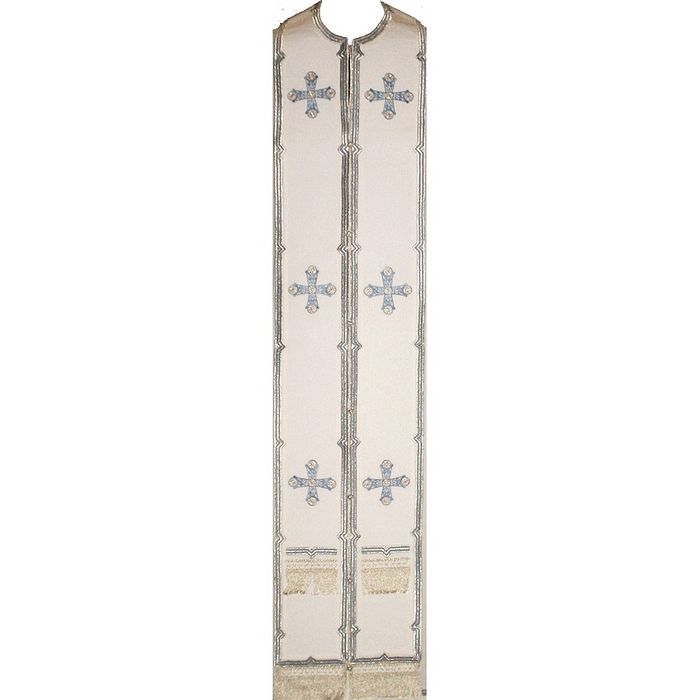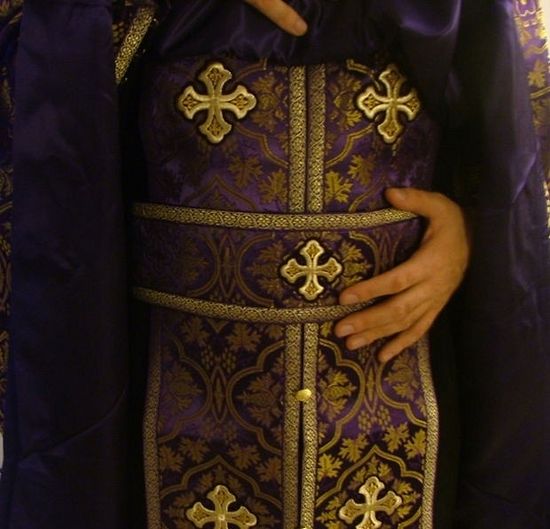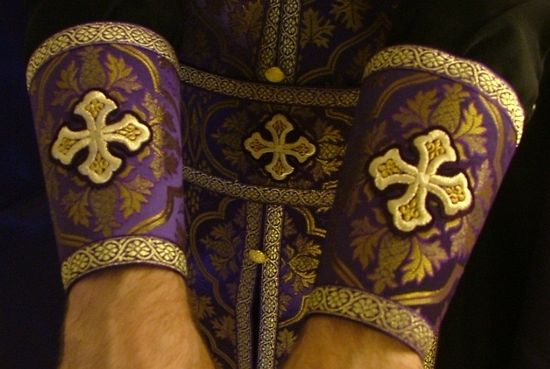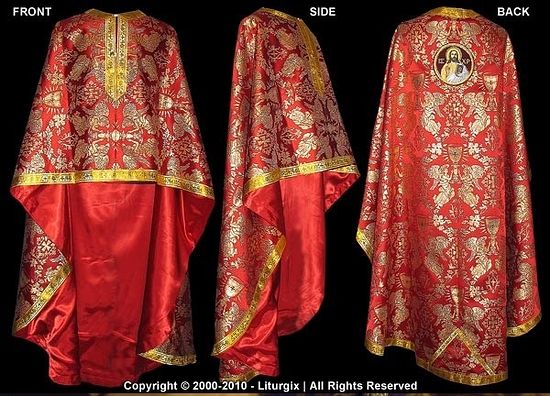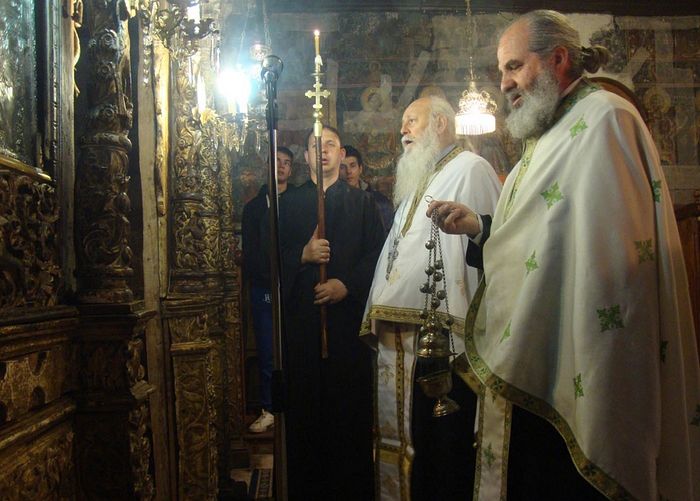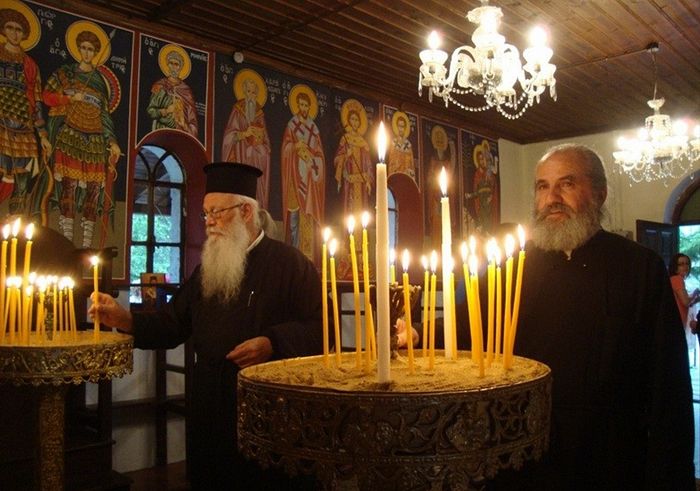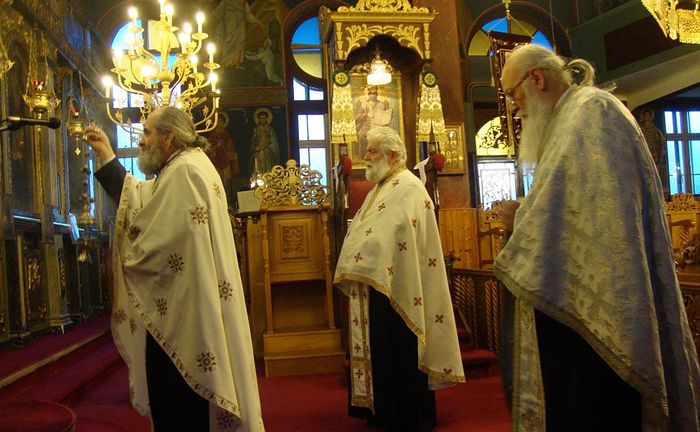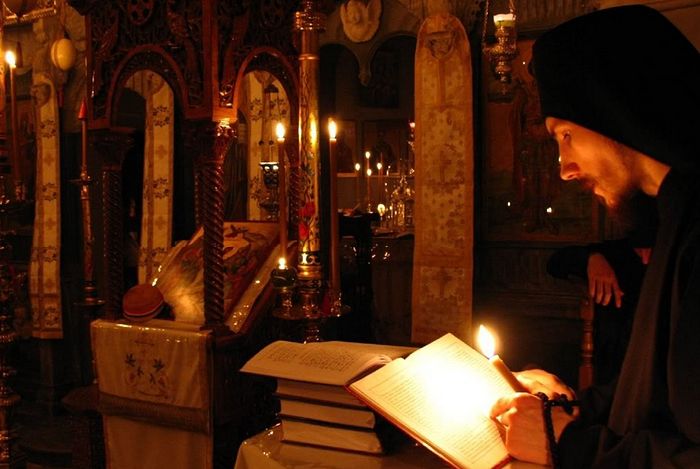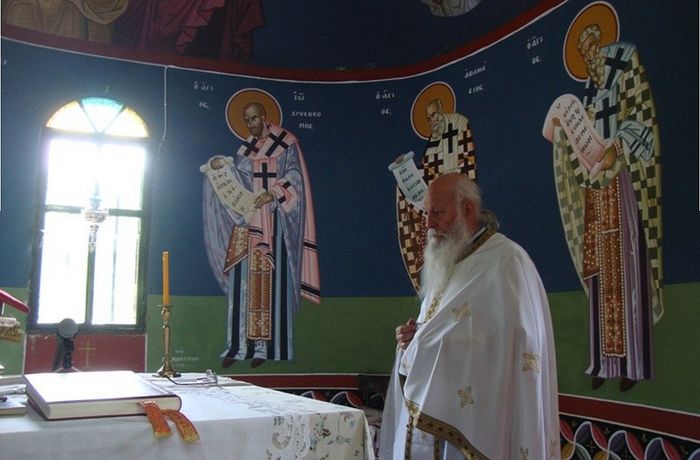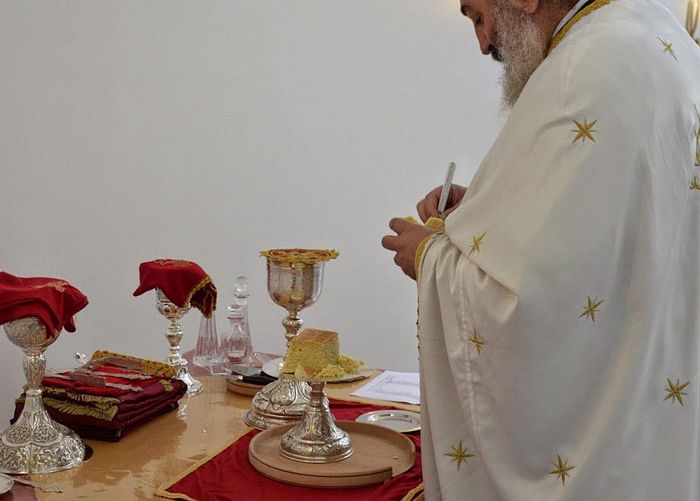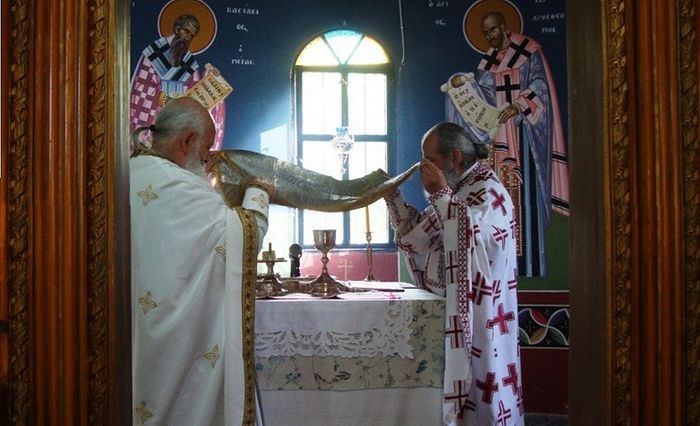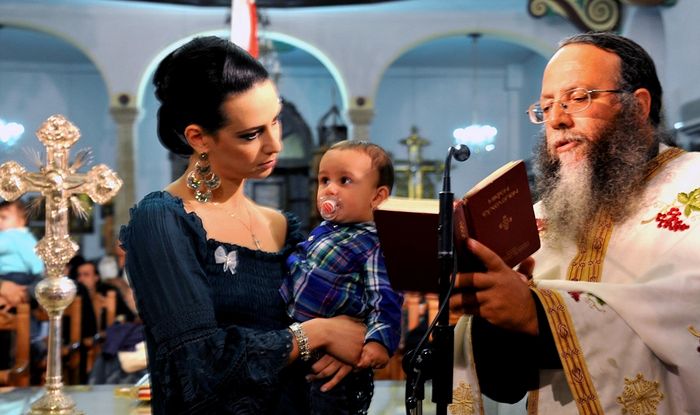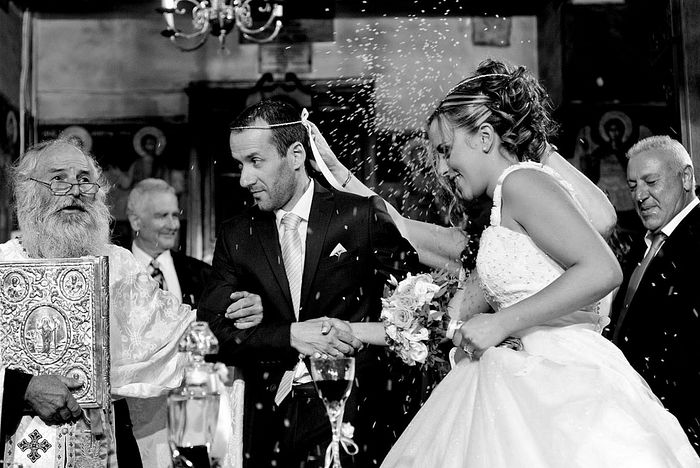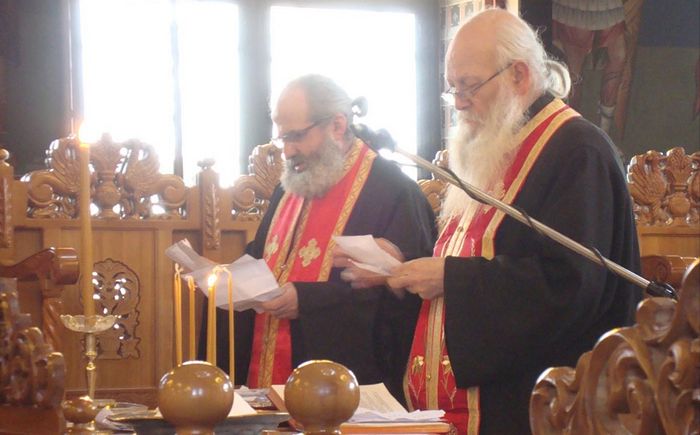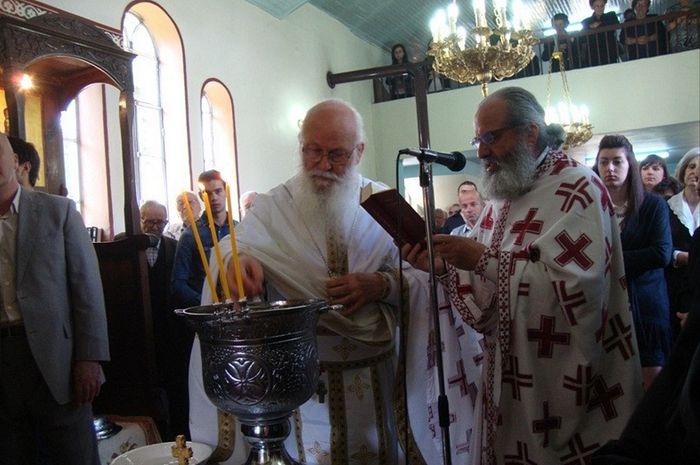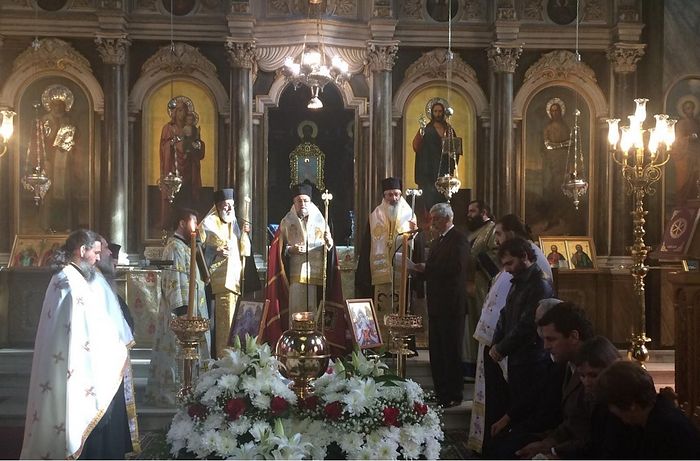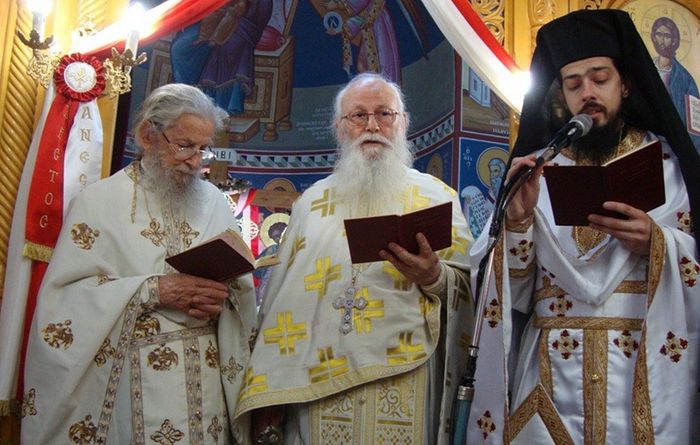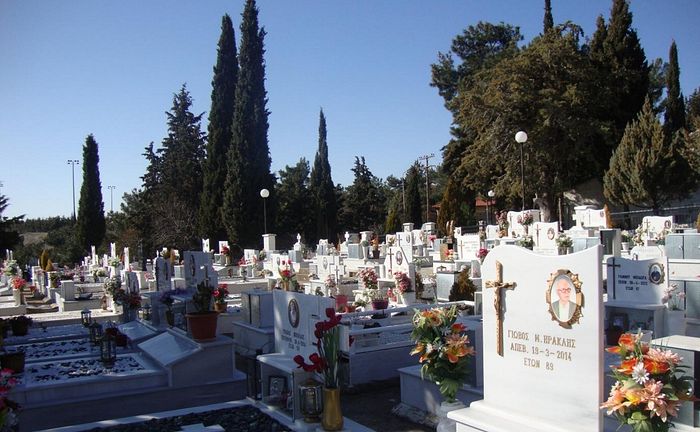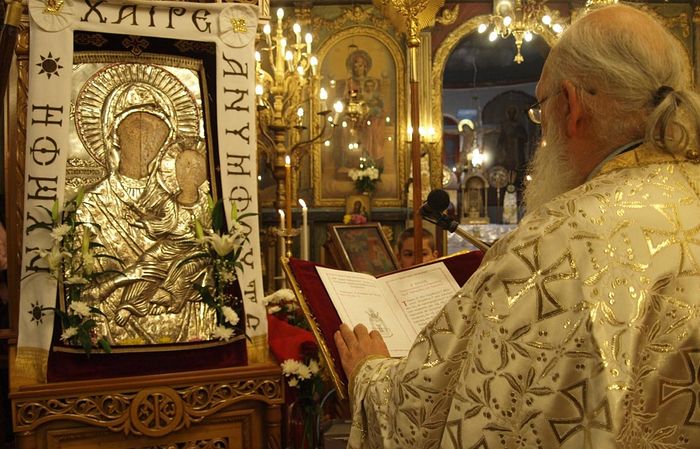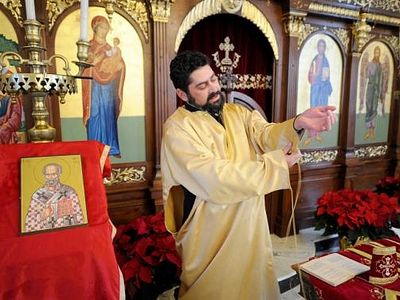Source: Orthodox Metropolitanate of Singapore and South Asia
January 21, 2016
In the Orthodox Church the clergy vest in special clothing for the liturgical services.
The Orthodox Church is quite firm in its insistence that liturgical vesting is essential to normal liturgical worship, experienced as the realization of communion with the glorious Kingdom of God, a Kingdom which is yet to come but which is also already with us in the mystery of Christ’s Church.
The Vestments of the Presbyter
The Vestments that an Orthodox Presbyter wears are the following:
- Cassock
- Eksorasson
- Sticharion
- Epitrachelion
- Belt
- Cuffs
- Phelonion
Cassock or Anderi
A long, floor-length garment that is more closely fitted to the body than the eksorasson, and has long narrow sleeves (fitted like shirtsleeves). The Anderi is a non-liturgical robe worn by all ranks of Orthodox clergy. It is worn under the outer cassock (eksorasson) both as ordinary daily clothing, and underneath “liturgical robes”. Like the eksorasson, the anderi symbolizes the death and burial of a clergyman from this world and all that entails, and his subsequent dedication to God and the Heavenly Kingdom. Wearing the cassock is common to bishops, priests, deacons, monks and nuns (permission to wear it is often given to seminarians, monastic novices, sub-deacons and readers in parishes).
Eksorasson or Outer Cassock
The eksorasson is a long, loosely fitted, floor-length garment. The Outer Cassock is a non-liturgical robe worn by Orthodox clergy both as ordinary daily clothing (their out-of-doors and domestic distinct attire), and underneath their “liturgical robes” (vestments which are worn during church services). The outer cassock symbolizes the cessation (distancing) and burial (death) of a clergyman from this world and all worldly things, and his subsequent dedication to God and the Heavenly Kingdom. Wearing the outer-cassock is common to bishops, priests, deacons, monks and nuns (permission to wear a cassock is often given to seminarians, monastic novices, sub-deacons and readers in parishes).
Sticharion
Is a long liturgical robe that reaches down to the floor, and has long sleeves. It is worn by all ranks of clergy during church services over their anderi, and it symbolises the spiritual cleanliness which a clergyman must possess when he is offering the Eucharist or officiating at other services.
Epitrachelion (Stole)
Which literary means “around the neck”, is a liturgical vestment shaped like a band, worn around the neck over both shoulders as a sign of ordained ministry. It is stitched together at various intervals in front of the body, and reaches all the way down to the ankles. Across the bottom and again some six inches from the bottom it has two horizontal bands of fringe which stand for the souls of the living and dead entrusted to the clergyman. The epitrachelion symbolises the spiritual yoke of the priesthood and the grace of the Holy Spirit which flows abundantly upon officiating clergyman, yet it also signifies the double portion of grace bestowed upon a priest, for the celebration of the Mysteries. It is the one vestment (in the absence of any others) which is absolutely necessary for a priest to conduct any liturgical service.
Belt
The Belt is a narrow cloth belt that goes over the sticharion and epitrachelion, and helps a priest fasten these two vestments upon his body to facilitate his movements during liturgical services. Yet it also attests to a clergyman’s readiness for service, just as a man girds himself when he sets out on a journey, undertakes a task or sets out for battle. It also symbolizes the divine power that strengthens the priest during the course of his serving. The belt also recalls the towel which the Saviour was given for the washing of the disciples’ feet at the Mystical Supper.
Cuffs
Cuffs (Epimanikia) are made of stiff cloth and are worn over the wrists to cover up the ends of the sticharion sleeves, and are tied up with lace which hangs at both ends of each cuff. The excess lace is tied up and tucked into the cuff itself. They remind those conducting the services that they celebrate the Mysteries or partake of the Mysteries of the Christian faith not by their own powers, but by the power and Grace of God. They also remind us of the bonds that tied the hands of the Saviour during His passion.
Phelonion
The phelonion is a large, sleeveless, outer cape-like vestment, somewhat akin to a poncho, and is worn over the sticharion. The front part reaches to just above the waist, in order to facilitate the movement of a priest’s hands during church services, while the back of the phelonion hangs as far down as the ankles. The phelonion symbolises the red tunic with which Pilate dressed our Lord before His Crucifixion. Thus indicating the torments and suffering that a priest will endure during his ministry in order to serve God’s faithful and bear witness to the world of the reality of the Cross as the means to pass into the grace of the Resurrection. In addition to this the phelonion reminds the priests of the garment of righteousness with which they must be vested as servants of Christ. The sleeveless nature of the phelonion, is explained by St Cosmas the Aetolian, as a reference to the fact that the priest has his hands bound close to himself, and not open, receptive or attached to worldly things, and thus can receive the gifts of the Holy Spirit unhindered.
The Vestments of a Priest for each Service
Vespers with no Entrance
The Priest is vested in
- Cassock
- Eksorasson
- Epitrachelion
Vespers with Entrance (also Vespers on Saturday Evening)
The Priest begins the Vespers with his
- Cassock
- Eksorasson
- Epitrachelion
and before the censing he wears also the
- Phelonion
He keeps the Phelonion until the end of the Vespers
The Priest celebrates the Kneeling Vespers after the Liturgy on the Day of Pentecost vested in full vestments.
The Priest celebrates the Agape Vespers on the Sunday of Pascha vested in full vestments.
Matins with no Liturgy
The Priest is vested in
- Cassock
- Eksorasson
- Epitrachelion
Matins with Liturgy
If the Priest conducts the Service of Prothesis before the beginning of the Matins, he is vested in
- Cassock
- Sticharion
- Epitrachelion
- Belt
- Cuffs
- Phelonion
Otherwise, he begins the Matins vested in
- Cassock
- Eksorasson
- Epitrachelion
and after the Litany of Peace he wears
- Cassock
- Sticharion
- Epitrachelion
- Belt
- Cuffs
- Phelonion
Prothesis
The Priest begins the Prothesis vested in
- Cassock
- Sticharion
- Epitrachelion
- Belt
- Cuffs
- Phelonion
Divine Liturgy
The Priest celebrates the Divine Liturgy vested in
- Cassock
- Sticharion
- Epitrachelion
- Belt
- Cuffs
- Phelonion
Sacrament of Baptism
The Priest conducts the Catechesis and the Exorcisms vested in
- Cassock
- Eksorasson
- Epitrachelion
The Priest conducts the Sacrament of Baptism vested in
- Cassock
- Eksorasson
- Epitrachelion
- Phelonion
Sacrament of Marriage
The Priest conducts the Sacrament of Marriage vested in
- Cassock
- Eksorasson
- Epitrachelion
- Phelonion
Sacrament of Holy Unction
The Priest conducts the Sacrament of Holy Unction vested in
- Cassock
- Eksorasson
- Epitrachelion
The Service of the Sanctification of the Water
The Priest conducts the Service of the Sanctification of the Water vested in
- Cassock
- Eksorasson
- Epitrachelion
The Priest conducts the Service of the Great Blessing of the Water on the Eve of Theophany and on the day of Theophany vested in full vestments.
The Priest conducts the Service of the Tossing of the Holy Cross into the sea after the Liturgy of Theophany and the Service of the Great Blessing of the Water vested in
- Cassock
- Eksorasson
- Epitrachelion
The Funeral Service
The Priest conducts the Funeral Service vested in
- Cassock
- Eksorasson
- Epitrachelion (white color)
- Phelonion (white color)
The Memorial Service
If the Priest is going to conduct a Memorial Service (with kolyva) at the end of the Liturgy, he is vested in full vestments. Otherwise the Priest is vested in
- Cassock
- Eksorasson
- Epitrachelion (white color)
The Trisagion Service
The Priest conducts the Trisagion Service (with no kolyva in the church or at the graveside) vested in
- Cassock
- Exorasson
- Epitrachelion (white color)
The Akathist Hymn
The Priest begins the Service of the Akathist Hymn vested in
- Cassock
- Eksorasson
- Epitrachelion
When it is the time to chant the Salutations (Stanzas) before the holy icon of the Most Holy Theotokos he wears also the Phelonion.
The Paraklesis to the Most Holy Theotokos
The Priest conducts the Services of the Small and the Great Paraklesis to the Most Holy Theotokos vested in
- Cassock
- Eksorasson
- Epitrachelion
